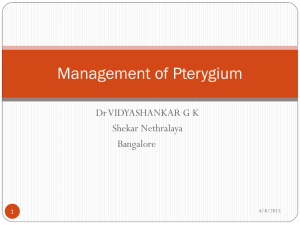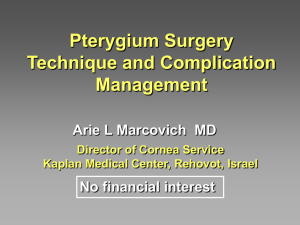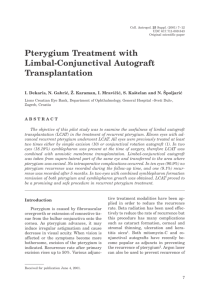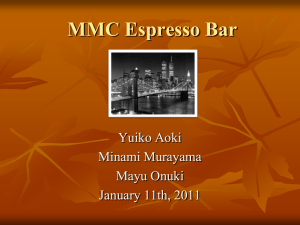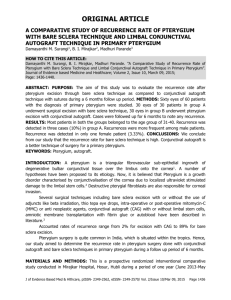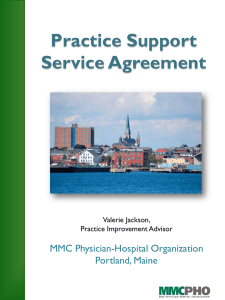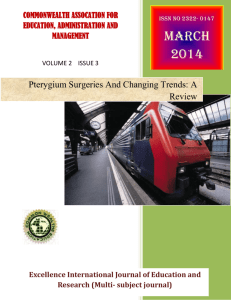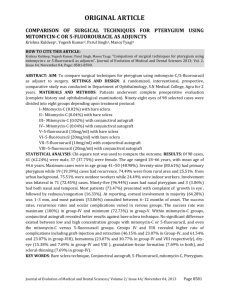Pterygium
advertisement
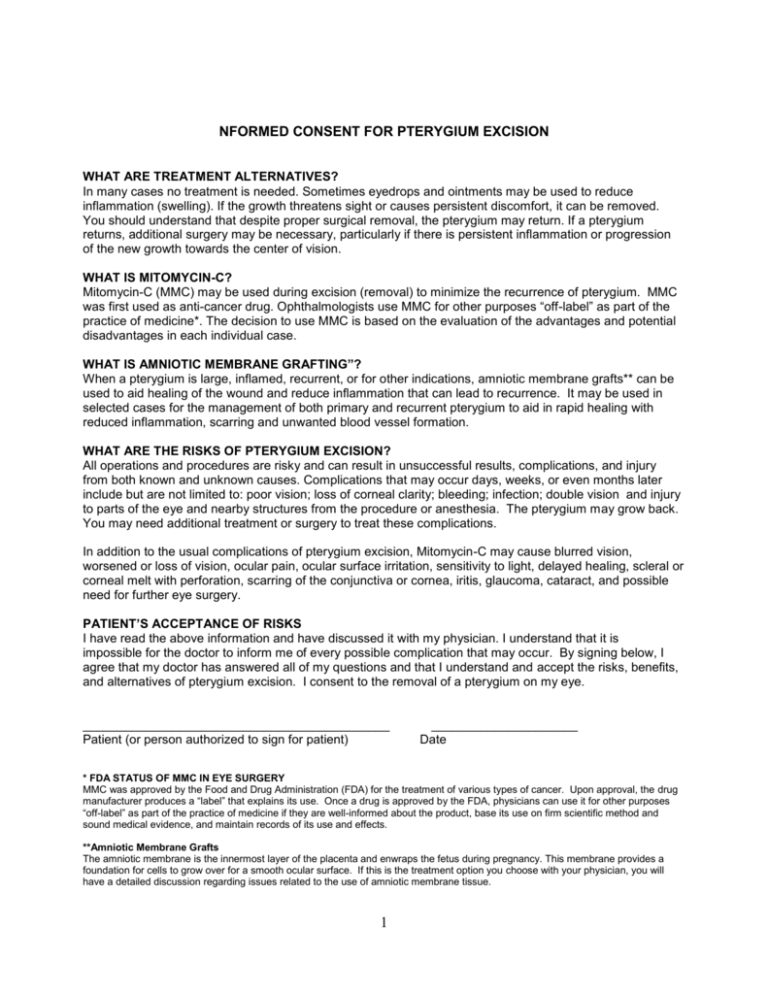
NFORMED CONSENT FOR PTERYGIUM EXCISION WHAT ARE TREATMENT ALTERNATIVES? In many cases no treatment is needed. Sometimes eyedrops and ointments may be used to reduce inflammation (swelling). If the growth threatens sight or causes persistent discomfort, it can be removed. You should understand that despite proper surgical removal, the pterygium may return. If a pterygium returns, additional surgery may be necessary, particularly if there is persistent inflammation or progression of the new growth towards the center of vision. WHAT IS MITOMYCIN-C? Mitomycin-C (MMC) may be used during excision (removal) to minimize the recurrence of pterygium. MMC was first used as anti-cancer drug. Ophthalmologists use MMC for other purposes “off-label” as part of the practice of medicine*. The decision to use MMC is based on the evaluation of the advantages and potential disadvantages in each individual case. WHAT IS AMNIOTIC MEMBRANE GRAFTING”? When a pterygium is large, inflamed, recurrent, or for other indications, amniotic membrane grafts** can be used to aid healing of the wound and reduce inflammation that can lead to recurrence. It may be used in selected cases for the management of both primary and recurrent pterygium to aid in rapid healing with reduced inflammation, scarring and unwanted blood vessel formation. WHAT ARE THE RISKS OF PTERYGIUM EXCISION? All operations and procedures are risky and can result in unsuccessful results, complications, and injury from both known and unknown causes. Complications that may occur days, weeks, or even months later include but are not limited to: poor vision; loss of corneal clarity; bleeding; infection; double vision and injury to parts of the eye and nearby structures from the procedure or anesthesia. The pterygium may grow back. You may need additional treatment or surgery to treat these complications. In addition to the usual complications of pterygium excision, Mitomycin-C may cause blurred vision, worsened or loss of vision, ocular pain, ocular surface irritation, sensitivity to light, delayed healing, scleral or corneal melt with perforation, scarring of the conjunctiva or cornea, iritis, glaucoma, cataract, and possible need for further eye surgery. PATIENT’S ACCEPTANCE OF RISKS I have read the above information and have discussed it with my physician. I understand that it is impossible for the doctor to inform me of every possible complication that may occur. By signing below, I agree that my doctor has answered all of my questions and that I understand and accept the risks, benefits, and alternatives of pterygium excision. I consent to the removal of a pterygium on my eye. ____________________________________________ Patient (or person authorized to sign for patient) _____________________ Date * FDA STATUS OF MMC IN EYE SURGERY MMC was approved by the Food and Drug Administration (FDA) for the treatment of various types of cancer. Upon approval, the drug manufacturer produces a “label” that explains its use. Once a drug is approved by the FDA, physicians can use it for other purposes “off-label” as part of the practice of medicine if they are well-informed about the product, base its use on firm scientific method and sound medical evidence, and maintain records of its use and effects. **Amniotic Membrane Grafts The amniotic membrane is the innermost layer of the placenta and enwraps the fetus during pregnancy. This membrane provides a foundation for cells to grow over for a smooth ocular surface. If this is the treatment option you choose with your physician, you will have a detailed discussion regarding issues related to the use of amniotic membrane tissue. 1
